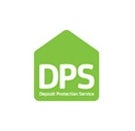Tackling the spring cleaning can seem a daunting task. The key to a thorough spring clean is to get organised! Make a plan for each room, with a list of tasks. In this article we aim to share with you some useful tips and advice to tackle the toughest of spring-cleaning tasks:
Tasks for every room
Ceilings: Using an extendable feather duster or the curtain attachment from your vacuum, lightly dust your ceilings to remove cobwebs – you will be surprised how many there are.
Skirting boards: Remove excess dust with a microfibre cloth before wiping down with warm water, use either anti-bacterial washing up liquid or a child and per friendly disinfectant.
Lampshades and Lights: Using a dry microfibre cloth lightly wipe away the build up of dust. For stubborn areas, try a slightly damp micro fibre cloth.
Livingroom
Sofa: Reading the care label, clean your sofa. It is a good idea to start by using the curtain attachment on your vacuum (the one with soft bristles) in the creases, before you start to clean. If you have extendable seats, don’t forget to lift them up and clean underneath.
Bedroom
Beds: Wash the mattress cover if you use one, hoover the mattress with the upholstery attachments and flip the mattress over. Repeat the hoovering on the new side and replace the now clean mattress cover.
Toys: Children’s toys are germ magnets, especially those belonging to younger children. Using a child friendly disinfectant diluted in a bowl of warm water, wipe clean and dry the toys with a soft clean cloth or towel.
Tackling awkward areas
Glass and Mirrors
There are some great glass cleaning products on the market, however, I have always found for the best streak free finish the best method is to use hot soapy water, a very soft cloth or sponge and an old towel (I use old baby towels as they leave little fluff and are a manageable size) to dry the areas. Make sure the cleaning cloth/sponge has very little excess water, clean the glass and then dry it with the old towel for streak free and glistening clean glass.
Microwave
Remove the base plate and wash separately. If like your microwave is like mine, which is often operated by teenagers, there are times when I have hard food deposits on the inside. The best way to clean a microwave is to add a small bowl of water and turn it on for 3-4 minutes or until steam is generated. Being careful when you remove the bowl (steam scalds!) you should now be able to simply wipe clean as the hard deposits will have softened. For a lovely clean smell, add a slice of lemon to the water before you steam.
Chrome cleaning
I love the look of chrome in the kitchen, however cleaning chrome can be a real challenge. For everyday use, simply use hot soapy water and a sponge so as not to scratch the surface, however for more stubborn grease or spills on chrome try Barkeepers Friend, this is excellent at bringing your chrome work back to its former glory without scratching it.
Fridge Cleaning
Empty the contents of the fridge, checking the use by dates of each item. Dispose of those items no longer in date. Beware “use by” and “best before” dates are very different if you want to know more about the differences between use by and best before dates this article from High Speed Training is very informative. For those items you will be returning to the fridge, give them a wipe over with a damp cloth to remove any sticky residue. Now the fridge is empty of all produce, remove all trays and shelves and wash in warm soapy water and leave to dry. Next it is time to tackle the inside of the fridge. Using your hot soapy water and a clean cloth, make sure the cloth is only damp, start from the top of the fridge and work down wiping every surface. Once clean, dry off with a clean and dry towel or cloth. You are now ready to replace the contents!
Oven cleaning
Most people’s least favourite task, the dreaded oven cleaning. If you ready do abhor this job then consider using a local oven cleaning company, these professionals will have your oven and grill gleaming in no time. If you are up for tackling the job yourself there are a lot of oven cleaning products to choose from. Most will require some time to develop, usually overnight. If you want a homemade oven cleaning solution, then the white vinegar and baking soda trick in this Daily Mail article will work a treat – the article is well worth a read as it has a host of oven cleaning hacks!
Limescale
Limescale can be the bane of your bathroom! Leaving a hard, white residue on your taps and sanitary ware. Beware, as scrubbing at the limescale might damage the unit. There is a wide range of chemical limescale removers readily available in most supermarkets, however white vinegar or lemon juice will work too! The Guardian has some excellent limescale cleaning advice in this article.
Laptops, Phones, Remote Controls and Tablets
These high touch devices are covered in bacteria! For keyboards, use a soft small paint brush and tilt slightly and use gentle sweeping motions to clear crumbs and dust from between the keys. Powering the device off, use an antibacterial wipe on the screens, be careful and don’t press too hard. Dry with a clean microfibre cloth.
Washing Machine
Using a damp cloth (hot soapy water), clean all around the rubber seal and dry. Remove the powder drawer and wash in warm soapy water, you may need a bottle wash brush or an old toothbrush to get into the nooks and crannies. Placing an old towel underneath, remove the filter plug and remove any trapped items – there is usually a hair tie or an elastic band in ours (usually from me as I tend to pick them up and pop them in my pocket and then forget about it). Make sure you replace the plug securely. Once these activities have been done, I usually run the machine empty through the hottest wash cycle. This is a self-cleaning device! If you suffer with limescale deposits in your machine then try using a Calgon tablet.
Floors
We strongly recommend you adhere to the manufacturers cleaning advice when cleaning any type of floor, for example, Wool based carpets will shrink if cleaned incorrectly, laminate flooring may warp if steamed etc.
Top Tips
Work from the top down, this applies to the whole house. Start at the top and work your way down. It also applies in each room, start with the ceilings and work down.
Don’t forget door handles, light switches and pulls. These are high touch areas and should be cleaned regularly.
Change cloths regularly and don’t use the same cloths in the bathroom, kitchen and living areas as you may end up simply transferring the bacteria to another room. At the end of your cleaning frenzy, put all cloths through a hot wash in the washing machine.
It is very important to follow the manufacturers cleaning and care guidelines in all instances. The tips and advice in this article should not supersede the care instructions provided by the manufacturer.









